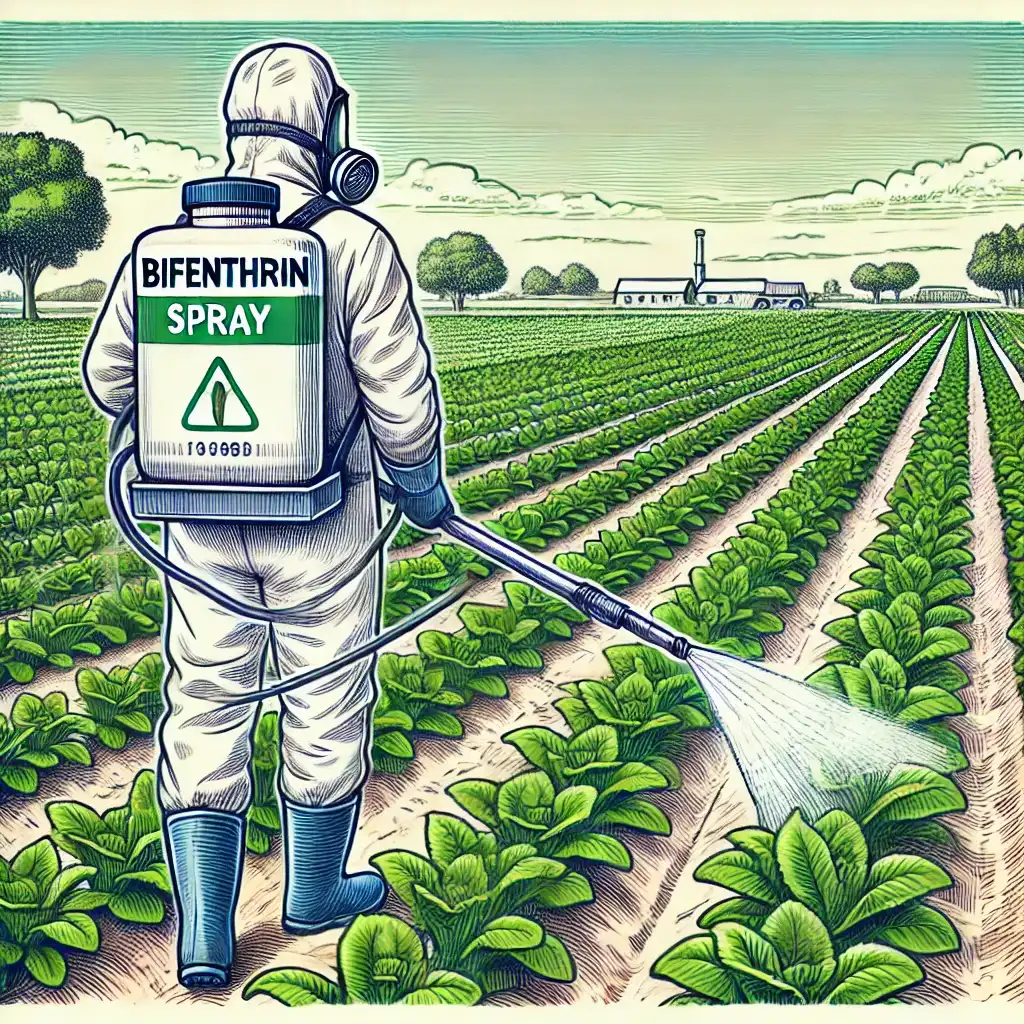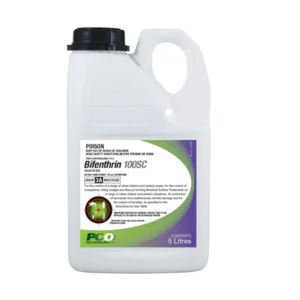Understanding Bifenthrin: Uses and Safety

Understanding Bifenthrin: Uses and Safety
What is Bifenthrin?
Bifenthrin is a synthetic pyrethroid insecticide, derived from pyrethrins found in chrysanthemum flowers. Developed and registered for use by the U.S. Environmental Protection Agency in 1985, bifenthrin has become a staple in pest control due to its effectiveness and relatively low toxicity to mammals.
As an active ingredient, bifenthrin works by targeting the nervous systems of insects. It interferes with nerve cell membranes, causing paralysis and eventual death in target pests. This mode of action makes bifenthrin particularly effective against a wide range of insects, including ants, termites, mosquitoes, and various agricultural pests.
Bifenthrin is available in several formulations, including liquids, granules, and ready-to-use sprays, allowing for versatile application methods depending on the specific pest control needs. Its chemical properties contribute to its effectiveness:
- It has low water solubility, which allows it to persist in soil and on plant surfaces.
- Its half-life in soil ranges from 7 days to 8 months, depending on soil type and conditions.
- Bifenthrin binds strongly to soil particles, limiting its mobility and potential for groundwater contamination.
These characteristics make bifenthrin a popular choice for both agricultural and urban pest management, offering long-lasting protection against a variety of insect pests.
USES OF BIFENTHRINS
Application in Agriculture
In agriculture, bifenthrin serves as a valuable tool for protecting crops from insect damage. Its broad-spectrum activity makes it effective against numerous pests that threaten agricultural productivity.Key agricultural applications include:
- Crop protection: Bifenthrin is used on various crops, including corn, cotton, and fruits, to control pests such as aphids, beetles, and caterpillars.
- Termite control: It’s widely employed to protect structures and crops from termite infestations.
- Mosquito and midge control: Bifenthrin is effective in controlling these disease-carrying insects in agricultural settings.
Farmers and agricultural professionals appreciate bifenthrin for its residual activity, which provides extended protection after application. This reduces the frequency of treatments required, potentially lowering overall pesticide use.
Residential and Commercial Uses
Beyond agriculture, bifenthrin finds extensive use in residential and commercial pest control:
- Indoor pest management: It’s effective against common household pests like ants, cockroaches, and spiders.
- Lawn and garden care: Bifenthrin controls various turf and ornamental plant pests, including lawn grubs and mites.
- Termite prevention: It’s used to create chemical barriers around buildings to prevent termite infestations.
- Public health: Bifenthrin plays a role in controlling disease vectors like mosquitoes in urban areas.
In these settings, bifenthrin is often applied by professional pest control operators due to its potency and the need for proper application techniques.



Safety and Environmental Impact of Bifenthrin
While bifenthrin is an effective pesticide, its use comes with important safety and environmental considerations:
Safety for humans: Understanding Bifenthrin
- Bifenthrin has low to moderate toxicity in mammals, with an oral LD50 in rats ranging from 53.4 to 210.4 mg/kg.
- It’s classified by the EPA as a possible human carcinogen (Category C), though evidence of carcinogenicity in humans is limited.
- Occupational exposure may cause skin irritation and paresthesia (tingling sensation), which is typically reversible.
Environmental impact: Understanding Bifenthrin
- Bifenthrin is highly toxic to aquatic organisms, including fish and invertebrates.
- It can persist in the environment, with a soil half-life of up to 8 months in some conditions.
- Care must be taken to prevent runoff into water bodies during application.
Safety measures: Understanding Bifenthrin
- Use of personal protective equipment, including gloves and respiratory protection, is recommended during application.
- Proper application techniques and adherence to label instructions are crucial to minimize environmental impact and ensure effectiveness.
- Integrated Pest Management (IPM) strategies should be employed to reduce reliance on chemical pesticides and minimize potential environmental effects.
Bifenthrin remains a valuable tool in the arsenal of pest control solutions, offering effective management of a wide range of insect pests in both agricultural and urban settings. Its versatility, from crop protection to household pest control, underscores its importance in modern pest management strategies.
However, the use of bifenthrin, like all pesticides, requires careful consideration of its potential impacts on human health and the environment. Proper application techniques, adherence to safety guidelines, and integration with other pest management strategies are essential to maximize its benefits while minimizing risks.
As research continues and our understanding of pesticide impacts evolves, it’s crucial for users of bifenthrin – from farmers to pest control professionals – to stay informed about best practices and emerging safety considerations. By doing so, we can continue to harness the benefits of this effective insecticide while responsibly managing its use for the safety of both humans and the environment.
For those seeking a professional-grade bifenthrin product, PCO Bifenthrin 100SC stands out as a highly effective solution. This suspension concentrate formulation contains 100g/L of bifenthrin, making it a potent tool for pest control operators and agricultural professionals. PCO Bifenthrin 100SC offers broad-spectrum control against a wide range of pests, including termites, ants, cockroaches, and various lawn and ornamental plant insects. Its low-odor formulation and long-lasting residual effect make it an excellent choice for both indoor and outdoor applications. When used according to label instructions, PCO Bifenthrin 100SC provides reliable pest management while minimizing environmental impact. For more information on this product and its applications, visit the PCO Bifenthrin product page.






 Mosquito Traps
Mosquito Traps